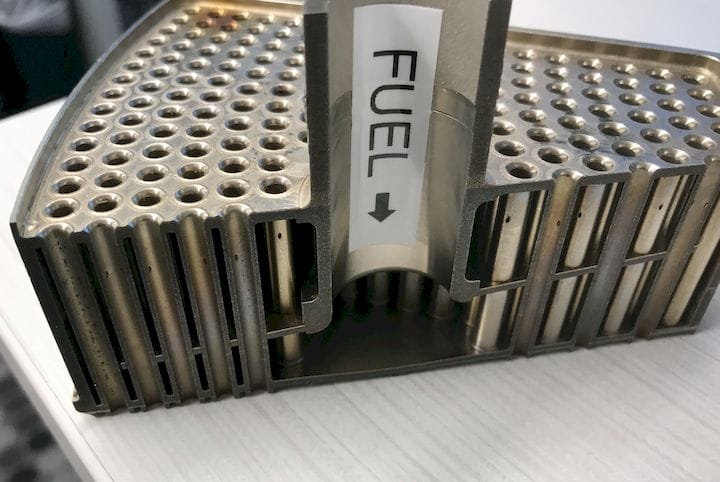![A complex 3D printed metal turbine component [Source: GE]](https://fabbaloo.com/wp-content/uploads/2020/05/ge-turbine-emissions-ov_result_img_5eb09d491ddeb.jpg)
I’m reading a piece from GE talking about emissions, and began thinking about 3D printing and emissions in general.
The topic of emissions is critical these days, as most people now understand the danger posed by climate change. However, to make a dent in the problem significant efforts must be undertaken, and that likely includes 3D printing.
But what can 3D printing do?
GE has one answer, and it has to do with the designs enabled by the technology of 3D printing. Additive manufacturing is quite different from traditional subtractive manufacturing in that it allows the creation of previously “impossible” designs.
The company has been focusing on the use of metal 3D printing in a couple of select industries, including aerospace and oil & gas. In particular, their report describes how they were able to help improve the efficiency of gas turbines used to generate electricity.
They explain:
“And now the technology is moving deeper into the hot belly of industry — inside power plants, where it’s helping utilities generate more electricity and reduce emissions. ‘It’s a total disruptor,’ says Guy Deleonardo, executive product manager for gas turbines at GE Power’s Gas Power Systems business. GE Power has already shipped more than 9,000 3D-printed components for use in gas turbines to customers the world.
Deleonardo says that in the past, it took GE up to a decade to move the efficiency of a turbine up a single percentage point. But with 3D printing at the company’s disposal, the time can now be counted in just years. That’s because the technology enables designers to quickly manufacture prototypes, test them, tweak their design and hit print again.”
There’s two things afoot here.
First, the 3D printing technology allows the production of unusual designs. But that begs a question: “where do these designs come from?”
That’s a factor that has held back 3D printing in industry for decades: the knowledge and skills to create designs FOR 3D printing is something foreign to many designers. Many designers of the past were trained using older traditional paradigms, which assumed that the making technologies were conventional.
This hidden bias against “unlimited” design still exists in the minds of many designers, although it is slowly going away as new engineers and designers enter the market after receiving more modern training.
That’s where the second factor comes in: iteration.
If you’re making a highly unusual design, it is likely going to require a large number of iterations to get it right. Using older technologies this was often problematic because of the cost and time required to produce the prototypes.
With a 3D printing strategy, iterations can happen far more quickly, as there is little requirement for “re-tooling” the making equipment; instead you simply print the second (or Nth) design and test it.
Armed with this capability, designers should be able to explore new designs that could open up many possibilities for industry. In the case of the gas turbines above, there is a clear advantage to adding a few points of performance to a generating station. The volume of gas processed in such operations is so huge that even a few points will produce significant savings and profits.
And yes, there are some savings in emissions, too.
What I’m wondering is whether there could be increased efforts to reduce emissions through 3D printed designs as a primary strategy, as opposed to gaining them merely as a secondary effect to profit goals.
One way this could happen is if 3D printing were extensively used to develop green technologies. I’m sure this is happening in some situations, but imagine the potential of being able to build any design, and applying it to the emissions problem directly?
Via GE











No one seems to offer collaborative 3D printing modes on dual extrusion devices. We explain why this is the case.